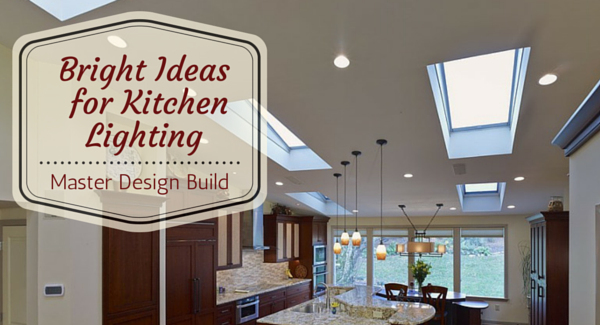Whether you’re considering a full-blown kitchen renovation or a quick update, lighting offers a unique opportunity to improve both the functionality and look of your space. It’s also most often overlooked when homeowners make kitchen improvements.

Layer Your Lighting
By blending different types of lighting, you can create functional and practical kitchen lighting that can be warm and lively for entertaining as well as intimate and inviting, all at the touch of a dimmer switch. The lighting types that work together in a kitchen include:
- Task lighting highlights a work area like the stovetop, sink or countertop.
- Ambient lighting with a central fixture provides general illumination.
- Decorative lighting offers a central design element, like a chandelier over the table.
- Accent lighting creates a focal point, highlighting specific features of your space like artwork.
- And don’t forget natural lighting with windows and skylights.
Make Task Lighting Work…Beautifully
Think about the main work areas in your kitchen to easily identify where task lighting should be focused.
Under-cabinet lights–strip or pucks–illuminate countertops during food preparation. They also provide a soft glow when installed on a dimmer switch.
Over your stovetop, a hood with integrated lighting. Other areas that call for focused, bright lighting, are the sink and the pantry. Can lights can be installed over the workspace, or pendants offer a decorative option; just beware of potential shadows on your workspace.
Create Ambience with your Kitchen Lighting
For general lighting, consider flush-mounted ceiling fixtures, pendants, tracks and downlights to wash walls in warm light. If you have space between the cabinets and ceiling, uplights can cast a soft glow. Remember, task lighting will do the job of brightening specific work areas. The goal of ambient lighting is to make your kitchen feel welcoming and comfortable.
Don’t Forget Decorative Elements
As kitchens became the social hub of homes, decorative elements like chandeliers have taken center stage. Here are some ideas to consider:
- Look for bold lighting fixtures as a focal point. Chandeliers don’t have to be formal. Whimsical options include natural materials like branches or vintage outdoor lanterns; modern and industrial-inspired fixtures are also interesting options.
- You can achieve just about any look with hanging pendants, available in a variety of artistic glass or fabric shades.
- Everything doesn’t have to match. In fact, spaces that mix complementary fixtures often feel more comfortable than those that are perfectly matched. Consider combining a metal chandelier with fabric shaded pendants, for example, to add softness and pattern.
Whatever you choose, ensure shades are opaque enough to cover the bulbs and prevent glare.
Accentuate the Positive
You can achieve another focal point in your kitchen with accent lighting. Do you have a beautiful collection of teacups or crystal in a glass-front cabinet? Or a stunning piece of artwork hanging in your eat-in area? Any feature you want to highlight can become a visual focal point with accent lighting. While each type of lighting is intuitive, the tricky part is determining how to blend them in a way that’s functional and complements other design elements in your kitchen. Take the time to do your own research so you can come to the table with plenty of ideas to share with your contractor. Web sites like Houzz and Pinterest are great resources because they allow you to create your own portfolios highlighting exactly what appeals to you. An experienced contractor or kitchen designer can then help you translate that vision into a functional reality in your own beautifully-lit kitchen. Our team at Master’s Design Build Group is happy to help you with your kitchen lighting needs, and any questions you may have.







Pingback: Sustainable & Green Building Practices for Kitchen Remodels
Pingback: The Energy Efficient Kitchen